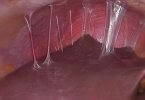What's in this article?
Condyloma Acuminata are a sexually transmitted disease that appears externally on the genitalia, in the anal area, internally in the upper vagina or cervix, and in the male urethra.
The lesion is typically raised and pinkish. This condition may produce no symptoms at all, or cause itching, burning, tenderness, pain during intercourse, or frequent urination.
Causes of Condyloma
Although genital warts are caused by human papilloma virus (HPV), many more people are infected with the virus than have warts. While HPV infections are not reportable as a sexually transmitted disease (STD), there is no question that they are indeed sexually transmitted.
HPV is a papillomavirus containing double-stranded DNA. It is the same shape as the herpesvirus. It does not appear to be blood-borne. Because some condyloma spontaneously disappear, as do some common body warts, it is clear that a large role in the infection is played by the individual patient’s cell-mediated immunity.
About 30$ of women who have HPV of the cervix, as diagnosed by Pap smear, go on to develop cervical dysplasia. It is clear that some forms of dysplasia and cervical cancer are caused by HPV.
Recently, researchers have been typing HPV; there are now over 45 known HPV types. Of these, HPV type 6 and type 11 involve the genitals in about 10% to 15% of cases. HPV types 16, 18, 31 and others are found mainly in cervical, vaginal and vulvar carcinoma.
Who gets Condyloma Acuminatum?
- It is estimated by the US Centers for Disease Control and Prevention (CDC) that around 50% of all sexually-active individuals may become infected with the genital human papilloma virus
- Condyloma Acuminata most commonly occurs in sexually-active individuals that include teenagers and young adults; but, it can also occur in older individuals
- Although the condition occurs with equal incidence in men and women, women seem to have the infection more often (including subclinical infection), and so present with symptoms more often than men
- The infection occurs worldwide; there is no ethnic or racial preference observed
Condyloma Acuminatum Diagnosis
Finding a cauliflower-like growth on the genitals is reason to see a doctor who can tell if it is genital warts or a different kind of growth.
The practitioner may use a type of microscope called a colposcope to examine a woman’s cervix to see if there are internal outbreaks.
When acetic acid (vinegar) is swabbed on the cervix or penis, HPV lesions appear whitish. Colposcopy can be valuable in detecting flat lesions that are not visible to the unaided eye, but only two-thirds of white areas seen in a colposcope are due to HPV infection. Sampling cells with a biopsy and testing for HPV genetic material, may be necessary to confirm a diagnosis.
An abnormal pap smear can sometimes indicate a cervical HPV infection. Some types of HPV can cause cervical cancer, while others can cause vulvar or anal cancer. With any abnormal pap smear, a woman should be examined by her doctor.
Treatment of Condyloma
Cure rates for condyloma, especially subclinical condyloma, are notoriously low. Treatment efficacy for standard therapies range from 20% to 90% in the immediate treatment period. After 3 months, however, many patients have recurring condyloma in the same area.
The consensus is that patients with visible condyloma should have them removed. Those males with subclinical condyloma may be candidates for laser ablation of suspicious subclinical areas if the virus has been typed as 16 or 18, or in the absence of typing there is histologic evidence of dysplasia and/or atypical mitotic changes upon cervical examination of their female partners.
There is a consensus that podophyllum, while it has eradicated exophytic (grossly visible) warts in the past, is probably outmoded. It is an unstable substance, its strength varies from bottle to bottle, and some patients are overly sensitive to it. Furthermore, it cannot be used during pregnancy. Eighty five percent trichloroacetic acid is used as a substitute for podophyllum. It is reasonable to treat lesions on the keratinized part of the skin once or twice with chemical agents. In general, however, such lesions are refractory to caustic agents and physical destruction is necessary. 5-Fluorouracil (5-FU) has also been used to treat warts.
What are the Risk Factors for Condyloma Acuminatum?
The risk factors of Condyloma Acuminata include:
- Unprotected sex or sexual contact
- Multiple partners
- Early age of sexual contact
- Having sexual contact with an individual whose sexual history is not known
- Smoking and alcohol
- A weak immune system increases one’s risk
- The use of birth-control pills
- Pregnancy
It is important to note that having a risk factor does not mean that one will get the condition. A risk factor increases ones chances of getting a condition compared to an individual without the risk factors. Some risk factors are more important than others.
Also, not having a risk factor does not mean that an individual will not get the condition. It is always important to discuss the effect of risk factors with your healthcare provider.






Leave a Comment